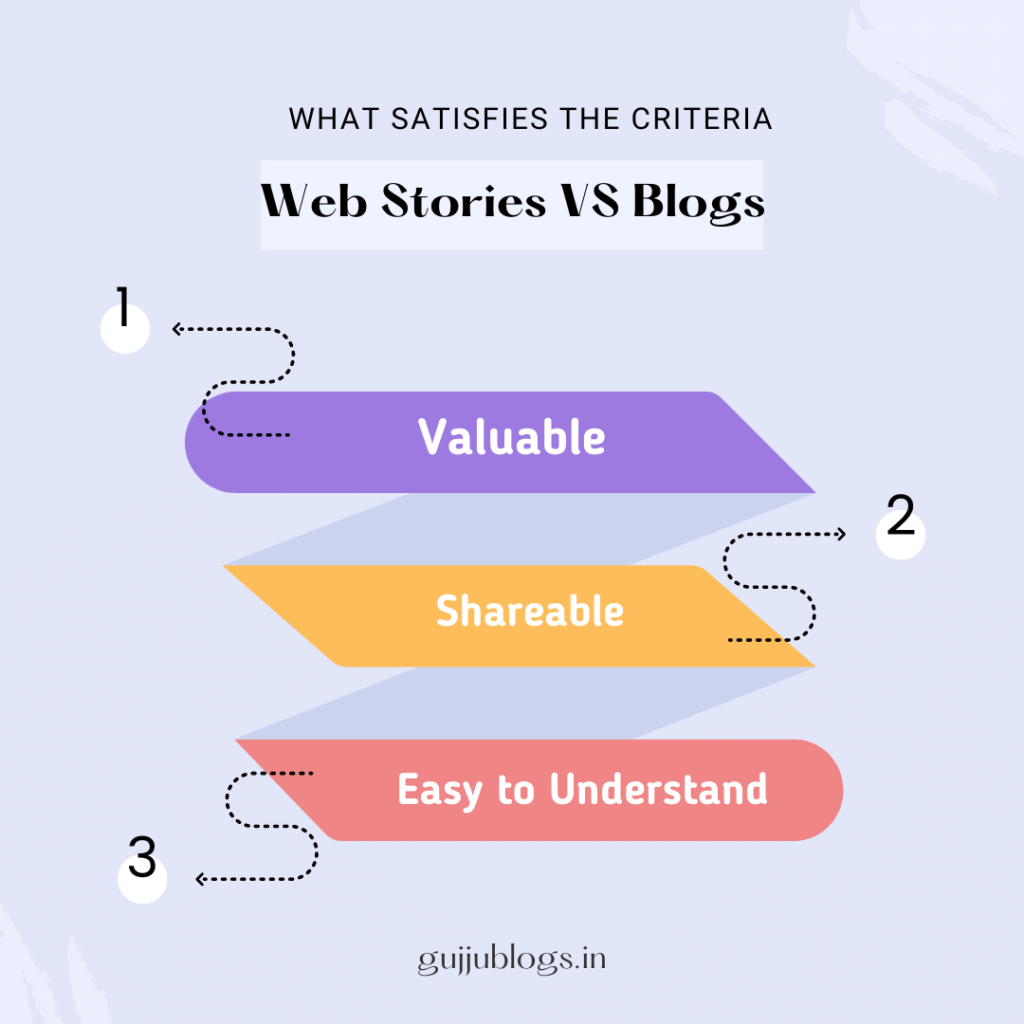In today’s digital age, content consumption has evolved, with users seeking bite-sized, visually engaging experiences. This shift has led to the rise of web stories, a format that combines multimedia elements like images, videos, and animations to deliver immersive storytelling. However, traditional blogs still hold their ground as a reliable and comprehensive source of information. In this article, we’ll explore the characteristics, advantages, and considerations of both web stories and blogs to determine which format might be better suited for different purposes.
Web Stories: Engaging, Visual Experiences
Web stories, also known as “stories” or “visual narratives,” have gained popularity across various platforms, including social media networks and dedicated story-sharing websites. They are designed to capture attention with visually appealing content, quick navigation, and an element of interactivity. Web stories are typically optimized for mobile devices and offer a mobile-first experience, making them easily accessible to users on the go.
Advantages of Web Stories:
- Visual Appeal: Web stories use vibrant images, videos, and animations to create visually captivating experiences that instantly engage users.
- Bite-sized Format: Web stories deliver content in bite-sized portions, ideal for users with limited attention spans or those seeking quick and digestible information.
- Mobile-Friendly: Web stories are optimized for mobile devices, providing a seamless and immersive experience for users who access content on smartphones and tablets.
- Interactive Features: Web stories incorporate interactive elements like polls, quizzes, and swipe-based navigation, enhancing user engagement and interactivity.
- Social Media Integration: Web stories can be easily shared and discovered on popular social media platforms, expanding their reach and visibility.
Considerations for Web Stories:
- Limited Textual Content: Due to the emphasis on visuals, web stories may have limited space for textual content, making them more suitable for concise information or storytelling rather than in-depth articles.
- Temporary Nature: Web stories are often designed to be temporary, disappearing after a certain period. This can limit their long-term visibility and archival potential.

Advantages of Blogs:
- In-Depth Content: Blogs allow for detailed exploration of topics, enabling comprehensive information sharing and analysis.
- Search Engine Optimization (SEO): Blogs can be optimized for search engines, making it easier for users to discover and access the content through relevant search queries.
- Long-Term Visibility: Blogs often have a permanent presence on websites, ensuring long-term visibility and accessibility for readers.
- Flexibility in Content Formats: Blogs support various content formats, including text, images, videos, and embedded media, allowing for versatility in presenting information.
- Establishing Authority: Consistently publishing well-researched and high-quality blog content can help individuals and businesses establish themselves as thought leaders and industry experts.
Considerations for Blogs:
- Time and Effort: Creating and maintaining a blog requires regular content production, editing, and formatting, demanding significant time and effort.
- Text-Centric: While blogs can include multimedia elements, they primarily rely on textual content, which may not be as visually engaging for certain audiences.
- Reading Habits: Some users prefer concise and visually stimulating content formats due to shorter attention spans, potentially impacting blog readership.
Conclusion
Both web stories and blogs have distinct advantages and considerations. Web stories excel at delivering engaging, visually appealing experiences, ideal for capturing attention and providing quick, bite-sized information. Blogs offer in-depth analysis and comprehensive information, suitable for those seeking detailed insights and long-term visibility.
Choosing between web stories and blogs depends on content goals, target audience, and the nature of the information being conveyed. Combining both formats can provide a well-rounded content strategy, catering to different user preferences and needs.
Ultimately, understanding the target audience, considering content objectives, and leveraging the strengths of each format will help deliver engaging and valuable experiences in the ever-evolving content landscape.
